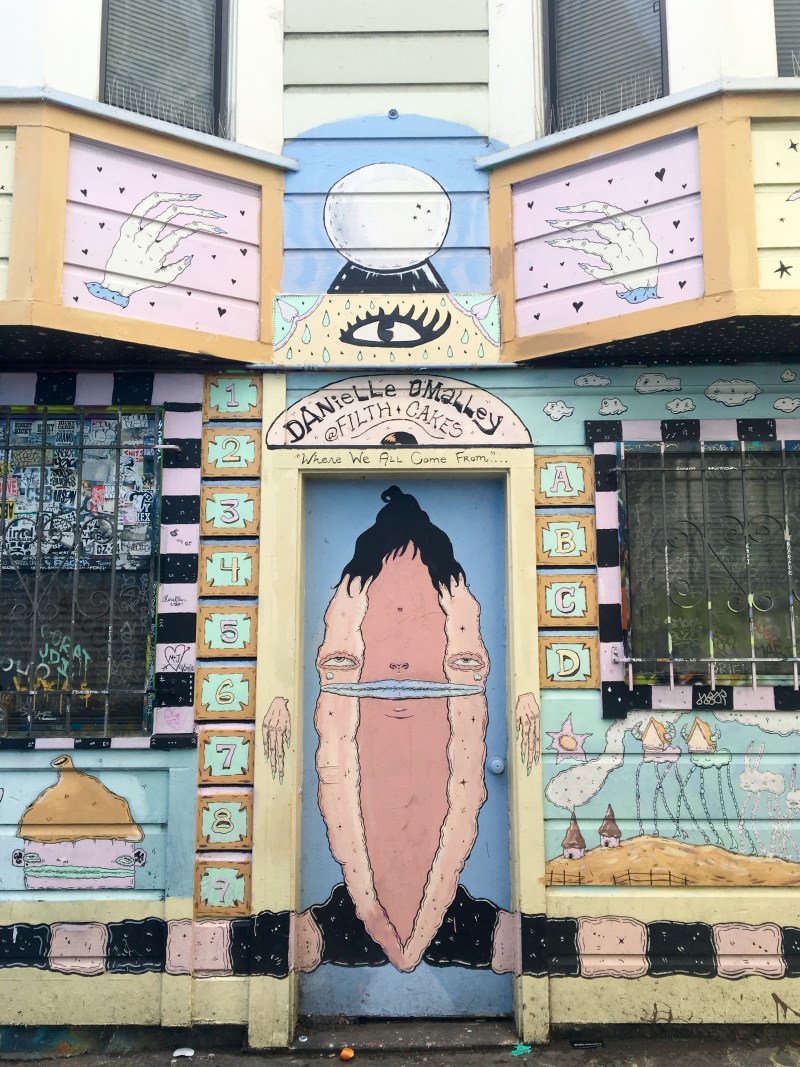Strolling down the hip streets of Mission District last weekend, I admired the abundance of vibrant color and mosaic patterns that decorated every corner, wall and alley that I laid eyes on. These psychedelic renditions and kaleidoscopic masterpieces reminded me why street art holds a special place in the hearts of many.
To me, street art is a liberating platform through which individuals can express their eccentric, creative vision. In a more technical view, street art, always situated in public spaces, can range from graffiti artwork to murals to sticker art to stencil graffiti. However, street art is often created on private surfaces without permission, and thus both legal and illegal street art can be tainted by perceptions of vandalism.
Is street art merely a form of street crime disguised? Should graffiti even be considered a form of art in the first place? The answers to these questions, if they even exist, are all grounded in debatable and multi-faceted opinions.
The message behind street art is also up for interpretation. Street art is sometimes meant to simply be viewed and appreciated. Other times, it is created to promote a strong political message or an emotional statement, which is extremely common in the works of anonymous England-based graffiti artist Banksy.
However, despite all the meaning we often try to force upon a work of art, perhaps street art does not always have to have a particular reason to be created. Perhaps what makes street art so special is that it often has no outlined purpose, serving only to paint a rather dull urban concrete world.
This idea of simply promoting a welcomed space of modern culture and expression is vivid within Clarion Alley, located in the heart of the Mission District of San Francisco. The mission behind the Clarion Alley Mural Project is to “produce socially engaged and aesthetically innovative public art” as a way to cultivate a supportive, artist-run community. This project emphasizes the idea of compassion, respect and social justice over commercial profit, which once again reinforces the liberating essence of an artist painting a public space for the sake of illustrating and sharing a piece of one’s imaginative self with the rest of the watching world.
The captivating murals and rainbow graffiti have led to another controversy, this time about the difference between genuine admiration for the art as opposed to taking a “candid” picture in front of a mural for the sake of upping your Instagram game. This is apparent in the online realm of popular fashion bloggers, where “wall scouting” has become a real phenomenon. All across social media, we constantly see seriously posed fashion icons and even ordinary people – myself included – in front of eye-catching street art so we can capture that perfect #OOTD moment.
Upon reflection, I have to be honest: I’m slightly ashamed to be a part of this not-so-genuine approach to appreciating urban art. I’ve grown to truly understand the passion and soul that street artists in numerous major cities put into their work, anonymously or not, and I only hope to continue supporting the efforts of these visionary individuals.
Whether graffiti art is vandalism or not, whether taking pictures in front of murals is false admiration or not, let’s just let the artist create and the viewer appreciate. Art and design is an integral part of our lives whether we embrace it or not because it is quite literally everywhere we go! If we start locally, we can find graffiti art on the d.school bus and awesome murals around Palo Alto painted by Greg Brown along California Avenue. But if you want to go on a quick adventure and explore just a bit further, take a day to hop on the CalTrain and tour around Mission District to admire the urban art for yourself!
Happy sightseeing!
Contact Clarissa Gutierrez at cgutier ‘at’ stanford.edu.






